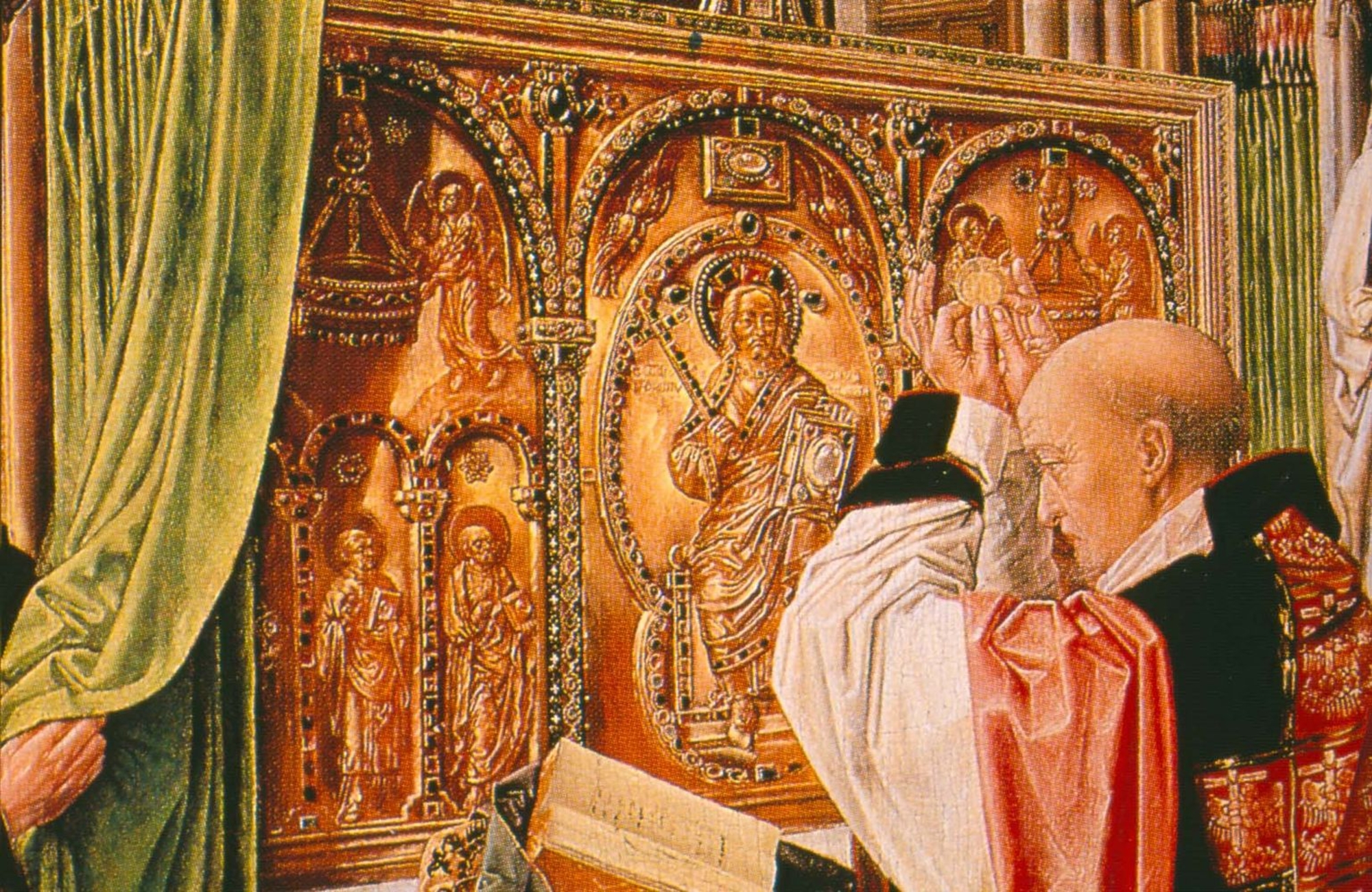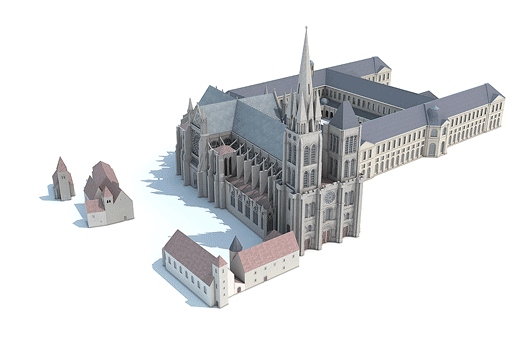- Home
- The town and the abbey
- The town within its walls
- The "very Christian" (17th to 18th century)
Reconstructed view of the monumental complex,mid-18th century.
© Ministère de la culture / M. Wyss ; A.-B. Pimpaud ; M.-O. Agnes.
The army and religious orders repopulate the town
Following the Wars of Religion, the town wall was summarily reinforced with bastions, and Saint-Denis was chosen as the site of a garrison for a regiment of Swiss Guards, who were billeted on the local inhabitants.
The abbey took advantage of the emptiness of the urban zone, and created large pleasure gardens. Concurrently, a community of monks and four convents of cloistered nuns established themselves intra-muros-the Recollects in 1604, the carmelites in 1625, the Ursulines in 1628, the Annonciades in 1629 and the Visitation of Mary in 1639. Henceforth, more than a third of the town was the property of various religious orders, whose members represented about 10% of the population. The calling of these convents was to tend to the sick and provide education for children.
A change in the status of the monastery and its churches
In 1691, Louis XIV eliminated the title of "Abbot of Saint-Denis" and allotted the abbot's revenues to the ladies of the Maison Saint-Louis at Saint-Cyr who, in their capacity as "lords of the town", entrusted a bailiff with administering Saint-Denis in collaboration with the local magistrates. From this moment on, the clerics of Saint-Denis were under the authority of the Bishop of Paris. North of the abbey-church, the churches around the large cemetery fell into disrepair and decay, with the exception of those whose parishes still held enough of the faithful. These included the Trois-Patrons church, which was rebuilt in 1600, as well as the Trois-Paroisses and Saint-Michel-du-Charnier churches. In the same way, the never-completed Valois mausoleum threatened to collapse and had to be demolished in 1719. Seven years later, the canons of Saint Paul decided to move to the priory of Estrée, which had been donated to them.
Renewed economic growth
Economic growth only returned to Saint-Denis in the early eighteenth century. Around 1700, the Benedictine monks began reconstructing their monastery. This sumptuous building was built according to plans drawn up by Robert de Cotte, architect to the king. Its construction brought about the progressive disappearance of the medieval buildings. In 1704, Louis XIV restored the ancient privileges of the inhabitants of Saint-Denis, exempting them from the tallage, or direct tax, providing they continued to pay the toll, a tax on goods entering the area. In 1720, the town was granted municipal franchise status, and Jean-Baptiste Le Laboureur became Saint-Denis' first mayor. A leather manufacturing workshop was built on the banks of the Croult, near an old tanning mill. Later, the town specialised in the production of painted calico, cotton fabrics that were printed in much the same way as toiles de Jouy.
The first major town-planning
Between 1724 and 1740, the principal town-planning event was the creation of the Enghien road. The operation was part of the program of restoring France's network of roads that was launched during the reign of Louis XV by engineers from the Ponts et Chaussées engineering school. Other work was undertaken to improve traffic circulation in the town. A small street in front of the abbey was enlarged to the size of a town square. At the same time, to make it easier for funeral processions to reach the abbey, the châtelet was demolished in 1769, followed quickly by the wall around the square in front of the basilica in 1770. In 1756, the new barracks for the Swiss Guards were located at the exit from the town, which freed Saint-Denis' inhabitants from a long period of forced cohabitation with the military.

